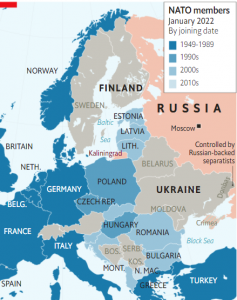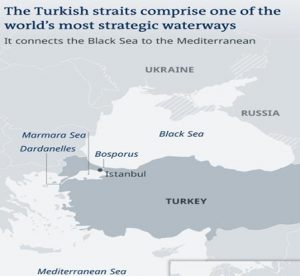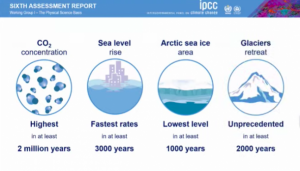THE INTERNATIONAL RELATIONS
1. EXPLAINED: WHAT IS FINLANDIZATION ?
THE CONTEXT: France President invoked a Cold War-era term“Finlandization” of Ukraine was “one of the models on the table” for defusing tensions with Russia.
THE EXPLANATION:
What is term about?
- The term refers to Finland’s strict neutrality during the Cold War, enshrined in a 1948 treaty with Moscow when tensions between the Soviet Union and the West were at a high.
- The treaty ensured Finland that unlike other countries in Eastern Europe, it would not face a Soviet invasion, but in return, it agreed to stay out of NATO and allowed the giant next door to exercise significant influence over its domestic and foreign policy.
- The origin of Finlandization can be traced back to the Cold War. Finland did not join NATO and there was no interference from Moscow due to the Finno-Soviet Treaty of 1948.
THE NEW ALLIANCE
- Ukraine, formerly a part of the Soviet Union, has increasingly tilted toward the West, economically and politically, while resisting Russian influence. In 2008, NATO said it planned eventually for Ukraine to join the alliance, a popular idea within the country, though it has never actually applied for membership and NATO officials say it would not happen any time soon.
- “Finlandization” would appear to rule out that possibility, and allow Moscow a heavy hand in Ukrainian affairs — concessions Kyiv and NATO have rejected as unacceptable.
- “All of this goes against what Ukraine has been striving for. “It would be a big shift from a long-term political aim of joining NATO and joining the E.U., which is what they have wanted.”
- The arrangement of French President appeared to suggest is “a way of solving a problem by making a decision over the head of the Ukrainians”.
With Russia determined to expand his sphere of influence and undermine an independent Ukrainian government, and the West making it clear it would not go to war against Russia to defend Ukraine, some experts have argued that “Finlandization” is the best course Ukraine can take.
2. RUSSIAN CLAIMS OF GENOCIDE FALSE: UKRAINE TO INTERNATIONAL COURT OF JUSTICE (ICJ)
THE CONTEXT: Ukraine has filed an application before the International Court of Justice (ICJ), instituting proceedings against the Russian Federation concerning “a dispute…relating to the interpretation, application and fulfillment of the 1948 Convention on the Prevention and Punishment of the Crime of Genocide” (the “Genocide Convention”).
THE EXPLANATION:
Ukraine has accused Russia of falsely claiming that “acts of genocide have occurred in the Luhansk and Donetsk oblasts of Ukraine”, and of using that as a pretext to recognise the independence of these regions and of going to war against Ukraine.
About the International court:
- The ICJ is the principal judicial organ of the United Nations (UN). It was established in June 1945 by the Charter of the United Nations and began work in April 1946.
- The court is the successor to the Permanent Court of International Justice (PCIJ), which was brought into being through, and by, the League of Nations, and which held its inaugural sitting at the Peace Palace in (HQ)The Hague, Netherlands, in February 1922.
- After World War II, the League of Nations and PCIJ were replaced by the United Nations and ICJ respectively. The PCIJ was formally dissolved in April 1946.
- It is the only one of the six principal organs of the UN that is not located in New York City.(The other five organs are the General Assembly, the Security Council, the Economic and Social Council, the Trusteeship Council, and the Secretariat.)
India at the ICJ
India has been a party to a case at the ICJ on six occasions, four of which have involved Pakistan. They are:
- Right of Passage over Indian Territory (Portugal v. India, culminated 1960);
- Appeal Relating to the Jurisdiction of the ICAO Council (India v. Pakistan, culminated 1972);
- Trial of Pakistani Prisoners of War (Pakistan v. India, culminated 1973);
- Aerial Incident of 10 August 1999 (Pakistan v. India, culminated 2000);
- Obligations concerning Negotiations relating to Cessation of the Nuclear Arms Race and to Nuclear Disarmament (Marshall Islands v. India, culminated 2016);
- (Kulbhushan) Jadhav (India v. Pakistan, culminated 2019).
3. JAPAN AND INDIA RENEWS BILATERAL SWAP ARRANGEMENT
THE CONTEXT: Japan and India have renewed the Bilateral Swap Arrangement (BSA) of up to $75 billion with effect from February 28, 2022.
THE EXPLANATION:
- “Japan and India believe that the BSA, which aims to strengthen and complement other financial safety nets, will further deepen financial cooperation between the two countries and contribute to regional and global financial stability”
What is Bilateral Swap Arrangement?
- Bilateral Swap Arrangement is a two-way arrangement where both authorities can swap their local currencies in exchange for the US Dollar.
- This means, India can acquire dollars from Japan in exchange for rupees. And, conversely, Japan can also seek dollars from India in exchange for yen
- The BSA was negotiated between India and Japan during the Indian prime minister’s visit to Japan in 2018. Consequently, the swap arrangement was signed to the tune of $75 billion in October 2020, to bring greater stability to foreign exchange.
Background:
In recent years, economic relationship between Japan and India have steadily expanded and deepened. The volume of trade between the two countries has increased. India was the 18th largest trading partner for Japan, and Japan was the 12th largest trading partner for India in 2020.
The year 2022 marks the 70th anniversary of the establishment of diplomatic relations between Japan and India. It is an opportunity to reminisce, be mindful of the present and envision our future. It gives me pleasure that we can celebrate the 75th anniversary of the Independence of India and the 70th anniversary of Japan-India diplomatic relations together.
THE ENVIRONMENT AND ECOLOGY
4. SIXTH ASSESSMENT REPORT (AR6) ON CLIMATE CHANGE: IMPACTS, ADAPTATION AND VULNERABILITY
THE CONTEXT: The Intergovernmental Panel on Climate Change (IPCC), the climate science body of the United Nations, published the second instalment of its Sixth Assessment Report (AR6). It focuses on the effects of climate change on ecosystems and society.
THE REPORT HIGHLIGHTS:
- Most populated regions at high risk: Cities — which house more than half of the world’s population — are at the highest risk from climate change. Globally, about 3-3.6 billion people are highly vulnerable to climate change.
- Poor most hurt: Climate impacts do not distinguish between borders but the poorest are hit the hardest. Low-income populations face the largest gap in adaptation action.

- Every degree of rise in warming increases risks: “Projected adverse impacts as well as related losses and damages escalate with every increment of global warming. Up to 14 per cent of species face a very high risk of extinction at global warming of 1.5 degrees Celsius (°C) over pre-industrial levels. The risk increases to 29 per cent at 3°C and 39 per cent at 4°C of global warming.
- Some changes irreversible: Some climate change-driven losses, such as the extinction of species, are irreversible. Others are approaching irreversibility with accelerating climate change. These include the retreat of glaciers and thawing of permafrost, particularly in the Arctic region.
- If global average temperature rise temporarily crosses the 1.5°C — known as the “overshoot” scenario — critical and fragile ecosystems will be lost, even if temperatures are brought down (theoretically, using carbon dioxide removal technologies like direct air capture). This will be disastrous for biodiversity.
- Impact on health, food, agriculture: Climate change has conclusively affected the physical and mental health of people around the world. Human society will increasingly face heat stress, water scarcity, threats to food security and flood risks as the crisis worsens.
- At 2°C of warming, people in sub-Saharan Africa, South Asia and Small Island Developing States will face severe food shortages and malnutrition.
INDIA’S PICTURE
According to IPCC report, Lucknow and Patna, are among the cities predicted to reach wet-bulb temperatures (a metric of humidity) of 35°C if emissions continued to rise, while Bhubaneswar, Chennai, Mumbai, Indore, and Ahmedabad are all identified as at risk of reaching wet-bulb temperatures of 32-34°C with continued emissions; overall, Assam, Meghalaya, Tripura, West Bengal, Bihar, Jharkhand, Odisha, Chhattisgarh, Uttar Pradesh, Haryana and Punjab will be the most severely affected, but if emissions continue to increase, all Indian States will have regions that experience wet-bulb 30°C or more by the end of the century.
BIODIVERSITY
According to the report, the future climate change could reduce the extent of a suitable habitat for giant pandas, the moose, black muntjac, the Sichuan snub-nosed monkey in China, Persian leopard in Iran, Bengal tiger and four tree snail species in Thailand.
Climate change will have little impact on the habitats of the Asian elephant, but would cause the extinction of the Hoolock gibbon in Bangladesh by 2070.
The snow leopard, which is the apex predator in the mountain ranges of central and south Asia, is found across 12 countries in Asia. Of these, its suitable habitat area will increase in Afghanistan, Tajikistan, Uzbekistan, Kyrgyzstan, Kazakhstan, Russia and Mongolia.
Climate change will promote the invasion of six mostly serious invasive plant species in Nepal. These are:
- Ageratum houstonianum (Floss flower)
- Chromolaena odorata (Bitter bush)
- Hyptissuaveolens (Pignut)
- Lantana camara (Raimuniya in Hindi)
- Mikania micrantha (Bitter vine)
- Parthenium hysterophorus (Carrot grass)
It would also promote the growth of eleven invasive plant species in the western Himalayas and the Giant African Snail in India. Climate change would also inhibit the invasion of two invasive plants — Chromolaena odorata (Bitter bush) and Tridax procumbens (Tridax daisy) — in India.
“Projected sea-level rise, related aquatic salinisation and alteration in fish species composition may have a negative impact on poor households in southwest coastal Bangladesh.
URGENT NEED FOR MORE FINANCE, POLITICAL COMMITMENT
- In case of some regions and population groups, the limits to adaptation may have been reached. This is particularly for people living in the low-lying areas of Australasia and Small Islands, smallholder farmers in central and south America, Africa, Europe and Asia.
- To reap further benefits from adaptation, other constraints need to be overcome such as poor governance, climate literacy and access to finance.
- Current global financial flows for climate action are insufficient. They are mostly targeted at emissions reductions, with a small proportion going towards adaptation. As climate impacts worsen, economic growth will slow down and thus, reduce the availability of financial resources for vulnerable regions.
- Climate adaptation efforts have improved in recent years, but progress is unevenly distributed by geography and is slow. Political commitment and follow-through are needed across all levels of government, to accelerate adaptation. Institutional frameworks with clear goals and priorities that define clear responsibility are also key.
WAY FORWARD
- A key aspect of this report is the vast set of options it provides to reduce risks to people and nature. Strengthening of health systems can reduce impacts of infectious diseases and heat stress, and should be combined with disease surveillance, early warning systems, and improved access to potable water, it outlined.
- The report recommended harnessing the adaptive strengths of nature through measures like:
- Agroforestry
- Conservation, protection and restoration of natural forests
- Planting of diverse tree species to withstand climate impacts.
- Adopting rainwater storage and other water-saving technologies can help combat groundwater depletion in agriculture.
- Food security can be enhanced by adopting stress-tolerant crops and livestock, promoting community-based adaptation that is locally driven as well as respecting local and indigenous knowledge system.
- Cities can use nature-based engineering approaches like establishing parks, green corridors, and urban agriculture. And expanded social safety nets will help with disaster management.
- The report closes on an instructive and poignant note: The cumulative scientific evidence is unequivocal: Climate change is a threat to human well-being and planetary health. Any further delay in concerted anticipatory global action on adaptation and mitigation will miss a brief and rapidly closing window of opportunity to secure a liveable and sustainable future for all.
- Holding global temperature rise to below 1.5°C could reduce projected losses.
THE PT PERSPECTIVE- PLACES IN NEWS
5. TURKEY BLOCKS WARSHIPS FROM STRAITS AMID RUSSIA-UKRAINE CRISIS
THE CONTEXT: Amid tensions between Russia and Ukraine, Turkey has barred warships from passing through the key straits of Bosphorus and Dardanelles in a bid to de-escalate the crisis.
THE EXPLANATION:
The Turkish straits give Russia’s Black Sea fleet entry to the Mediterranean. The Montreux agreement allows Ankara to regulate maritime traffic through the waterways during peace and wartime alike.
The Bosphorus and Dardanelles straits connect the Aegean (part of the Mediterranean), Marmara (Turkey’s inland sea), and the Black Sea, the latter from which Russia launched an incursion on Ukraine’s southern coast.
The 1936 pact gives Ankara the right to bar warships from using the Dardanelles and the Bosphorus during wartime and in case of threats to Turkey.
THE PRELIMS PRACTICE QUESTIONS
QUESTIONS OF THE DAY 1ST MARCH 2022
Q1. Consider the following statements about IPCC:
- It was established in 1988 by WMO and UNDP.
- Its headquarter is hosted at WMO headquarters in Geneva.
- It is scientific body which gathers, monitors and do research on climate related data.
Which of the above given statements is/are incorrect?
a) 1 only
b) 2 and 3 only
c) 1 and 3 only
d) 3 only
Q2. Which of the following pairs is/are correctly matched?
- Bosporus Strait – The Aegean Sea and the Sea of Marmara.
- Dardanelles Strait – The Aegean Sea and the Black Sea
- Kerch Strait – The Black Sea and Sea of Azov
Select the correct answer using the code given below:
a) 1 and 2 only
b) 2 and 3 only
c) 3 only
d) 1, 2 and 3
ANSWER FOR 28TH FEB 2022
Answer: C
Explanation:
Statement 1 is correct: Society for Worldwide Inter bank Financial Telecommunication(SWIFT) is a messaging network used by banks and financial institutions globally for quick and faultless exchange of information pertaining to financial transactions. SWIFT, first used in 1973, went live in 1977 with 518 institutions from 22 countries, its website states. SWIFT itself had replaced the much slower and far less dynamic Telex.
Statement 2 is incorrect: The Belgium-headquartered SWIFT connects more than 11,000 banking and securities organisations in over 200 countries and territories.
Statement 3 is correct: SWIFT is merely a platform that sends messages and does not hold any securities or money. It provides standardised and reliable communication to facilitate the transaction.
Spread the Word

